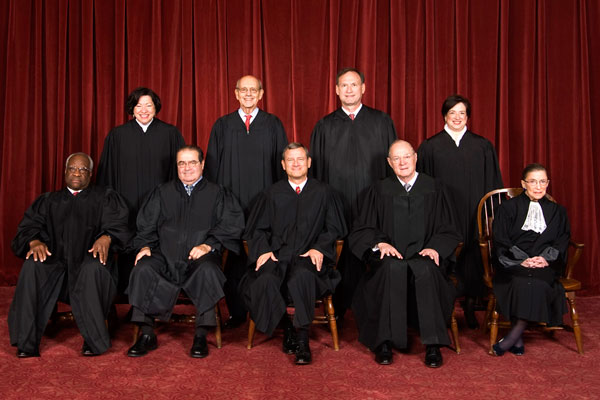Justices Take Next Step in Deciding Obamacare’s Fate
Elizabeth Slattery /
The morning news cycle has been buzzing with anticipation as the Supreme Court meets for its first conference after the Obamcare oral arguments, and some are reporting that the justices “will likely know the outcome of the historic health care case by the time they go home this weekend.” In fact, Obamcare won’t be the only topic of discussion today, and the justices’ decision process on Obamacare will likely continue for months.
During conference, the justices vote on cases that have already been argued, but they also discuss whether to grant or deny new petitions for certiorari. On deck for today’s conference are 162 cert. petitions, most of which the Court will deny but the Court may grant some or hold them over for further consideration at the next conference. There are also 29 cases that have been argued this term that the Court has not yet released a decision, so some of those could potentially be up for consideration.
When the justices cast a preliminary vote for Obamcare today, that won’t be the end of discussion. A justice on the fence could change his or her vote up until right before the decision is released to the public—and in this case Court watchers expect the decision will be handed down the last day of this term, likely in the last week of June. As for the process of conference and voting, no one other than the justices is allowed in during conference. Chief Justice John Roberts speaks first and then the other justices cast their votes in order of seniority, which is goes as follows: Antonin Scalia, Anthony Kennedy, Clarence Thomas, Ruth Bader Ginsburg, Stephen Breyer, Samuel Alito, Sonia Sotomayor, and Elena Kagan. If the Chief Justice votes with the majority (meaning at least 4 other justices agree with him), then he assigns the author of the majority opinion and may assign it to himself. But if the Chief Justice is in the minority, the most senior associate justice of the majority vote assigns the author. Thus, if the “liberal” wing prevails in the initial vote on ObamaCare, Justice Ginsburg will presumably decide who will author the opinion—a newfound role since the retirement of Justice John Paul Stevens.
The conference is not run like a congressional hearing—the justices do not blather on but rather simply state their vote and sometimes briefly indicate why. The real debate of the details will happen over the course of late spring and early summer, when the justices will circulate drafts of the majority and any dissenting or concurring opinions. It is possible that what was intended to be the majority opinion will become a dissent or concurrence because enough justices have been persuaded by a draft opinion to change their votes. As Legal Analyst Jan Crawford has described, following Justice Thomas’s first conference back in 1990, he was able to sway three justices to change their votes when he drafted a dissent in a case that would have otherwise been decided 8-0.
The justices are steadfast in maintaining the secrecy of conference until the decision has been released to the public. So while today’s conference is an important day, we’ll have to wait until June to learn the Supreme Court’s decision. But Congress shouldn’t wait for the Court to save it from its own misdeeds. Congress should repeal Obamcare now.

